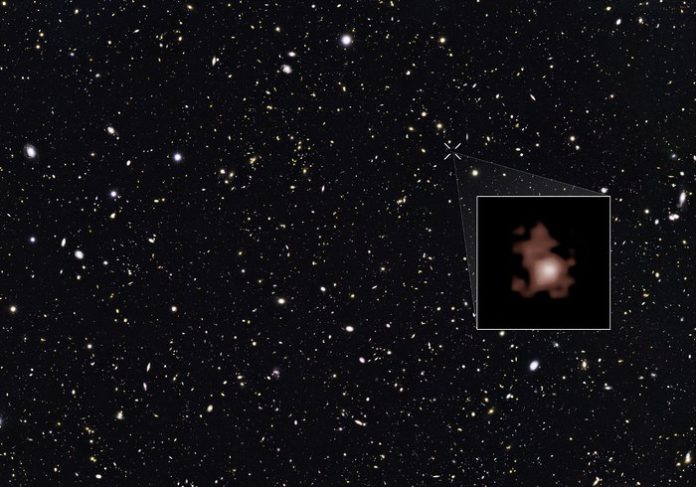Astronomers have detected the oldest (and the most distant) svarthol frá því snemma alheimurinn which dates from 400 million years after the big bang. Surprisingly, this is about a few million times the mass of Sun. Under the current understanding of formation of svarthol, such a massive svarthol should take billions of years to grow to this size but, Intriguingly, then the alheimurinn var aðeins 400 milljón ára gamall.
Earlier, researchers had, by combining data from Chandra X-ray Observatory and JWST, found a svarthol in UHZ1 Galaxy that dates from 470 million years after the big bang.
Now, Using James Webb geimsjónauki (JWST) data, astronomers have detected a blackhole in GN-z11 Galaxy that dates from 400 million years after the big bang. This makes this svarthol the oldest ever observed (BHs are not directly observed but detected indirectly by the tell-tale glow of a swirling accretion disc around it) dating from early alheimurinn. Ljósið tók næstum 13.4 milljarða ára að ná JWS sjónaukanum.
This newly detected svarthol from early alheimurinn er ofurstífl, um það bil nokkrum milljón sinnum massameiri en sól. Það sem er forvitnilegt við þetta svarthol er hvernig það gæti haft slíkan massa til að verða ofurstórt.
Svarthol are formed from collapse of the leifar af dauðu stjörnunni under gravity when fuel runs out, if the original mass of the stjörnu is more than 20 solar masses (>20 M⦿). Supermassive svarthol are formed when the original mass of the stjörnu is about a hundred times the mass of the Sun.
In line with this, a supermassive svarthol like the one detected recently from the early alheimurinn ætti að taka milljarða ára að myndast og vaxa en alheimurinn var aðeins um 400 milljón ára gamall.
Er einhver önnur leið til að mynda ofurmassív BH? Kannski, aðstæður í upphafi alheimurinn allowed this svarthol to be born big or it devoured matter from its host Galaxy into itself at much higher rate than thought to be possible.
***
Tilvísanir:
- NASA 2023. Fréttir – Sjónaukar NASA uppgötva svarthol sem sló met. Sent 6. nóvember 2023. Fæst á https://www.nasa.gov/missions/chandra/nasa-telescopes-discover-record-breaking-black-hole/ Forprentun fáanleg á https://doi.org/10.48550/arXiv.2305.15458
- Rannsóknir háskólans í Cambridge - Stjörnufræðingar greina elsta svarthol sem sést hefur. Sent 17. janúar 2024. Fæst á https://www.cam.ac.uk/research/news/astronomers-detect-oldest-black-hole-ever-observed/
- Maiolino, R., Scholtz, J., Witstok, J. et al. Lítið og kröftugt svarthol í fyrri alheiminum. Nature (2024). https://doi.org/10.1038/s41586-024-07052-5 Forprentun fáanleg á https://doi.org/10.48550/arXiv.2305.12492
***






































